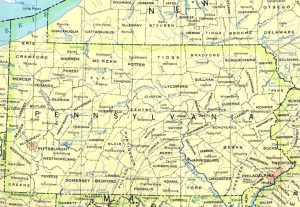Pennsylvania celebrates honey bees, $76M apiary industry
 State officials celebrated the honey bee’s critical role in food production, food security and biodiversity in Pennsylvania on Friday.
State officials celebrated the honey bee’s critical role in food production, food security and biodiversity in Pennsylvania on Friday.
Officials made the announcement in advance of Honey Bee Day.
The value of Pennsylvania’s apiary industry is estimated at more than $76 million, state officials said. Much of this is attributed to increased yield and quality in crops that are partially or completely dependent on honey bees for pollination.
“Honey bees, and everyone who tends to them and educates about them, are critical to agriculture and feeding Pennsylvanians,” said Agriculture Deputy Secretary for Plant Industry and Consumer Protection Fred Strathmeyer. “One out of every three bites we eat is made possible because of pollinators, including honey bees, and their role in promoting biodiversity and plant health in our food system.”
In Pennsylvania, more than 6,000 registered beekeepers manage more than 61,000 honey bee colonies.
Honey bees and other pollinators are also critical to the environment. More than 80 percent of the world’s flowering plants need to be pollinated in order to reproduce.
“Pollinators including bees help many flowering plants reproduce, and in turn are dependent on plants for food and habitat,” DCNR Bureau of Forestry Conservation and Ecological Resources Division Chief Rebecca Bowen said. “Protecting the land, planting native species, and converting lawn to meadows and forests are ways we all can help bees, butterflies, and other pollinators so they can continue to help us produce food and ensure diversity in our ecosystems.”
DCNR manages about 2.5 million acres of forest and park land that provide habitat for pollinators, plants, and wildlife; educates the public about the importance of biodiversity and native species; and leads a program to convert lawns to meadows and trees for pollinators and water quality.
Honey bees pollinate and help increase quality and yield of produce grown in Pennsylvania, including apples, melons, cranberries, cherries, pears, onions, cucumbers, pumpkins, squash, broccoli, almonds, berries, and much more.
Pennsylvania is home to hundreds of species of pollinators (bees, butterflies, moths, flies, beetles, and more), with more than 500 species of bees alone. Pennsylvania also has one of the most diverse crop systems in the U.S. In total, these crops contribute $260 million to Pennsylvania annually.
The Pennsylvania Pollinator Protection Plan was developed by Penn State’s College of Agricultural Sciences with input from 28 state and national organizations and stakeholder groups, including the Pennsylvania Department of Agriculture. The plan describes the current state of pollinators in Pennsylvania and provides recommendations for best practices and resources to support and expand pollinator populations.
We are here to share current happenings in the bee industry. Bee Culture gathers and shares articles published by outside sources. For more information about this specific article, please visit the original publish source: State celebrates honey bees, $76M apiary industry








